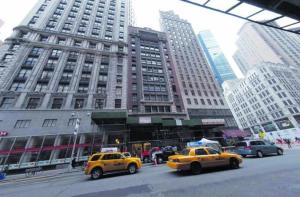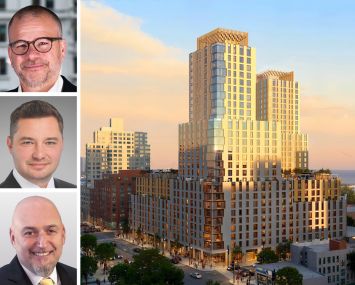After Push by Extell, Landmarks Backs Down Over West 57th Street Building
By Eliot Brown November 10, 2009 8:44 pm
reprints The city’s Landmarks Preservation Commission backed off its effort to landmark a B.F. Goodrich Company building on West 57th Street, a rare retreat by the commission and one that follows aggressive pushback from development giant Extell, which plans a mixed-use skyscraper on the property.
The city’s Landmarks Preservation Commission backed off its effort to landmark a B.F. Goodrich Company building on West 57th Street, a rare retreat by the commission and one that follows aggressive pushback from development giant Extell, which plans a mixed-use skyscraper on the property.
The LPC on Tuesday voted 6-3 to remove the building, 225 West 57th Street, from consideration as a landmark, just four months after the same board voted to consider it.
Typically, the LPC agrees to consider only those properties it expects to approve as landmarks, but, as became clear in recent months, this property was different. An eight-story office building that was built in conjunction with another B.F. Goodrich building at 1780 Broadway (that one was approved Tuesday as a landmark), Extell was vigorously opposed to its designation, as the firm said it would ruin its prime development site on the block. (Claiming no knowledge of the landmarks issue, Extell assembled at considerable cost: the mortgage on the site alone is for $265 million.)
The firm, which has worked with Landmarks in the past, enlisted unions and industry groups to help it fight the action, and it successfully urged four key Council members, including Council Speaker Christine Quinn, to send a letter tacitly urging the LPC to act the way it did Tuesday.
In his remarks on the vote at the commission’s meeting, LPC chairman Robert Tierney suggested the Council resistance was a major factor.
“I do not believe this building rises to the level of New York City individual landmark, particularly when compared to the exceptional buildings that already have been designated on Automobile Row,” he said. “In light of opposition to this designation from the City Council, and certain members of the City Council, the likelihood that that body will overturn any designation of 225 West 57th, I believe that in this case … the Commission should make its priority the designation of the building for which there is a consensus of support.”
THE SAGA SURROUNDING THIS site is a bit of a curious one. It’s rare for the LPC to begin the landmarking process on a building–an act known as calendaring–over the owner’s objections. But here, seemingly emboldened, the LPC started to landmark the building of one of the city’s largest, and rather well connected, developers, against its will.


